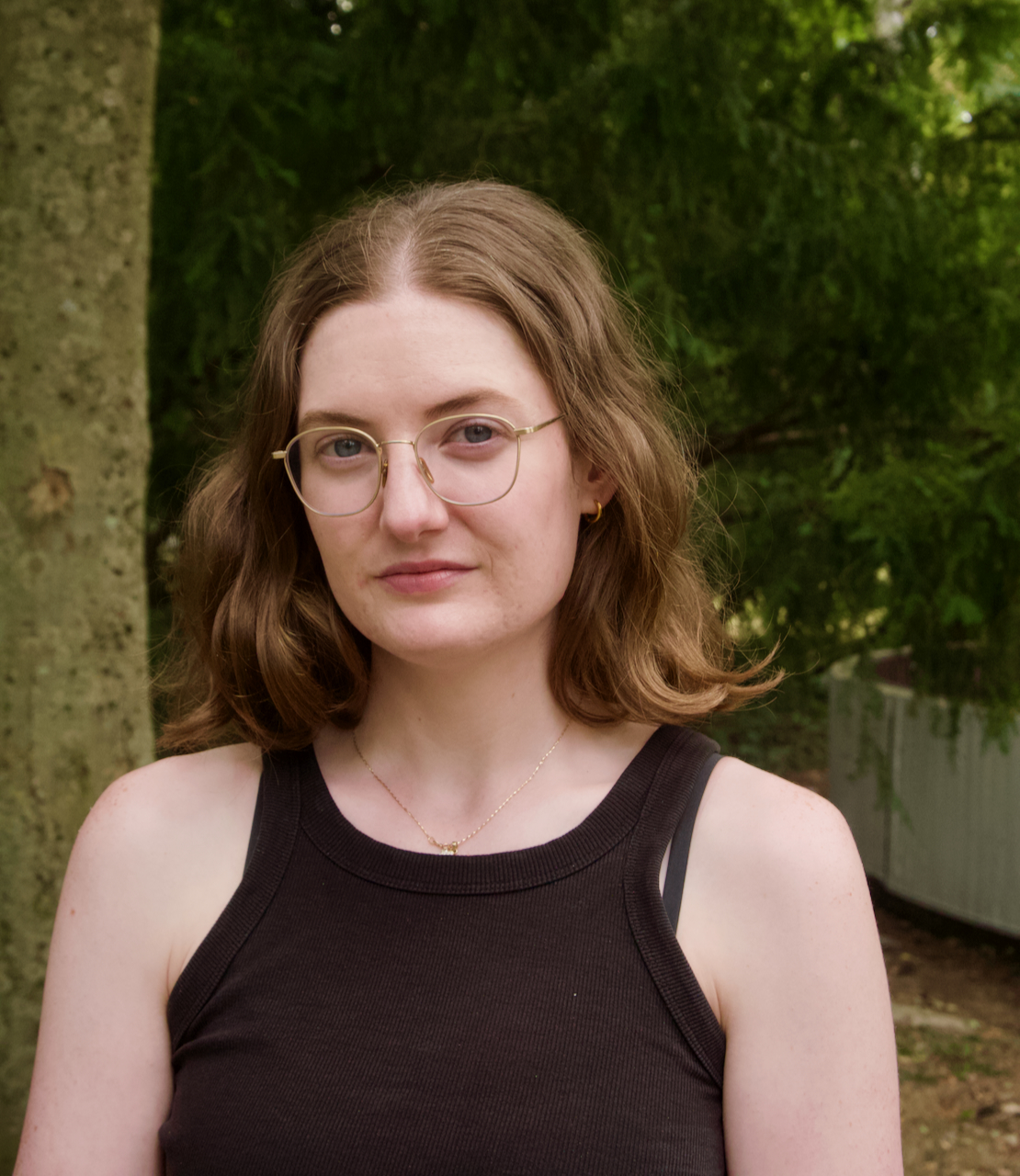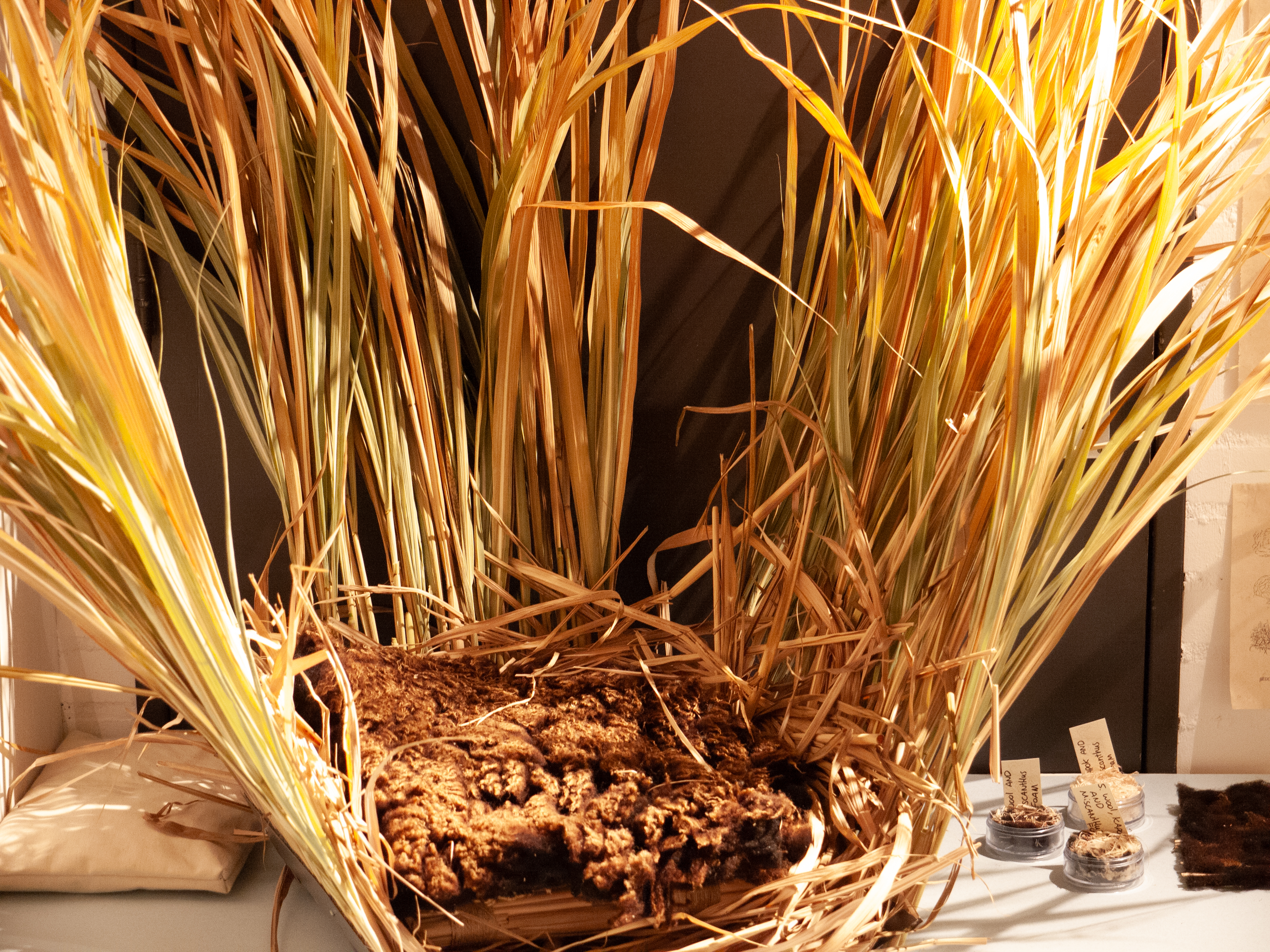Ashley Röttjers, originally from Arnhem and now based in Rotterdam, is a multitalented visual artist and photographer who graduated from the Willem de Kooning Academy’s Transformation Design department in 2019. Known for her critical and authentic approach, Ashley has worked with a broad spectrum of clients ranging from Patta to New Balance to Vogue. Her recent work was showcased at the Kunsthal with the multi-channel installation Hittegolf. Currently, she is venturing into a new creative medium, working on her first short fiction film, which merges her passion and creativity. Ashley’s vibrant yet nuanced style continues to distinguish her as a unique and influential voice in the art world.

How did you end up at WdKA, and why did you choose Transformation Design?
I've been obsessed with photography since I was 11, using my mom’s small camera. But I never thought I could make a career out of it. I initially enrolled in Arts & Economics at HKU but quit after six months because I found management to not suit me. I wasn’t ready to fully commit to photography at the time. After a gap year debating between the conservatory and photography, I chose Transformation Design because I was still hesitant to go all-in on photography. The course was chaotic, but I didn’t mind because I just wanted to create art and finish my studies. Within six months, I was solely using photography as my medium for almost every project, spending hours in the darkroom, obsessed with film. It became my favorite thing to do.
How did you experience your time at WdKA?
I didn’t always feel at home at WdKA. It was great to have four years to explore who I am, figure out where I want to go, and what I want to create, but I didn’t find the curriculum particularly engaging. The energy in my class was low, with many students dropping out. I also missed the support of a more diverse classroom and tutor team, particularly the presence of women and people of color in the department. I often felt misunderstood.
I did an internship in Berlin, where I built a strong network. It was an incredibly enriching experience. I then spent another half-year in New York for a minor. I followed that up with a 6 month minor at the School of Visual arts in New York, which was extremely valuable. I received tough but high-quality lessons in studio work and critical studies, both in terms of skills and theory. In New York, I felt more comfortable and truly seen.
Did you ever consider switching departments?
Yes, at the end of my second year, I considered switching to Fine Art and even tried it out for a few weeks. However, I didn’t switch in the end. I didn’t consider moving to Photography because I felt like it may be too limiting, and I’m happy I did not. In hindsight, I might have chosen Audiovisual, but I did appreciate the conceptual focus and space to play in Transformation Design.
What kind of artist are you?
Visually, I work with strong contrasts, often in black-and-white or toned-down, monochromatic images. I’m not a fan of overly saturated colors and enjoy playing with light.
Besides my aesthetic style, creating a non-hierarchical, pleasant work environment is really important to me. I value a healthy work-life balance, which can be challenging as a freelancer. As an artist, everything feels personal, so I remind myself “It’s never that deep.” This helps me approach my work with more freedom and joy.
What was your graduation project about?
My graduation project, “Groeipijn,” was a two-screen installation with locked images exploring different scenarios around identity, family, and dealing with racism. While abstract, the work was very personal to me, drawing from my own experiences.
The project gained a lot of attention, but I received many questions about my personal connection to it. It made sense but I had hoped it would resonate on a broader level, so that was a bit disappointing. It was the first and last time I created something so personal. I realized people were more interested in the sensational aspects of my story rather than the broader message I wanted to convey.
Did you experience uncertainty after graduation? How did you handle it?
Post-graduation, the reality is quite different from life at the academy. It’s hard to find work as an independent artist while staying true to your creative identity. At the academy, you have time and space to develop concepts, but in the real world, financial pressures can dominate. I wish we had more discussions about this during our studies.
Right after I graduated, the pandemic hit. I was working at a café but had just signed a lease for a studio space. I remember thinking, "How am I going to pay for this?" That uncertainty actually left me no other choice but creating and taking on small jobs here and there. Looking back, that necessity made me more entrepreneurial.
How do you balance commercial and personal work?
While studying, I never imagined doing commercial work; I was focused on personal and autonomous projects. It’s funny because, since graduating, I’ve mostly worked on commercial projects for numerous fashion and commercial brands. I now appreciate finding a balance between commercial and personal work. Even in commercial projects, I bring my personal style, and I hope that’s why people hire me.
Can you tell us about one of your latest projects?
Recently, I worked on “Hittegolf,” which was featured at the Kunsthal as part of the exposition “40 years of Zomercarnaval”. This project was very special to me, especially having my work shown at such a prestigious venue. The project pays tribute to the rich diversity of Rotterdam’s Zomercarnaval through a multi-channel video installation, directed by me and produced by Robbert Doelwijt Jr.
I’m currently working on a photography project in which I’m exploring black women and their femininity and complexities and applying for my first fiction film project exploring mental health.
What was the most valuable thing about your time at the academy?
During my first year I was confronted with myself, especially being surrounded by so much talent. It was so humbling as a young kid coming to the academy. Willem de Kooning made me better in both a technical and mental sense. Now, I’m not easily intimidated by others and thrive with my peers. It all feel less competitive, there’s enough space for all of us.
What advice would you give to current WdKA students aspiring to a similar career?
Take time to reflect on what you truly want. Don’t focus too much on the future. Celebrate your successes and be proud of yourself. Don’t compare yourself to others, everyone has their own path. Take risks, don’t stand still!


